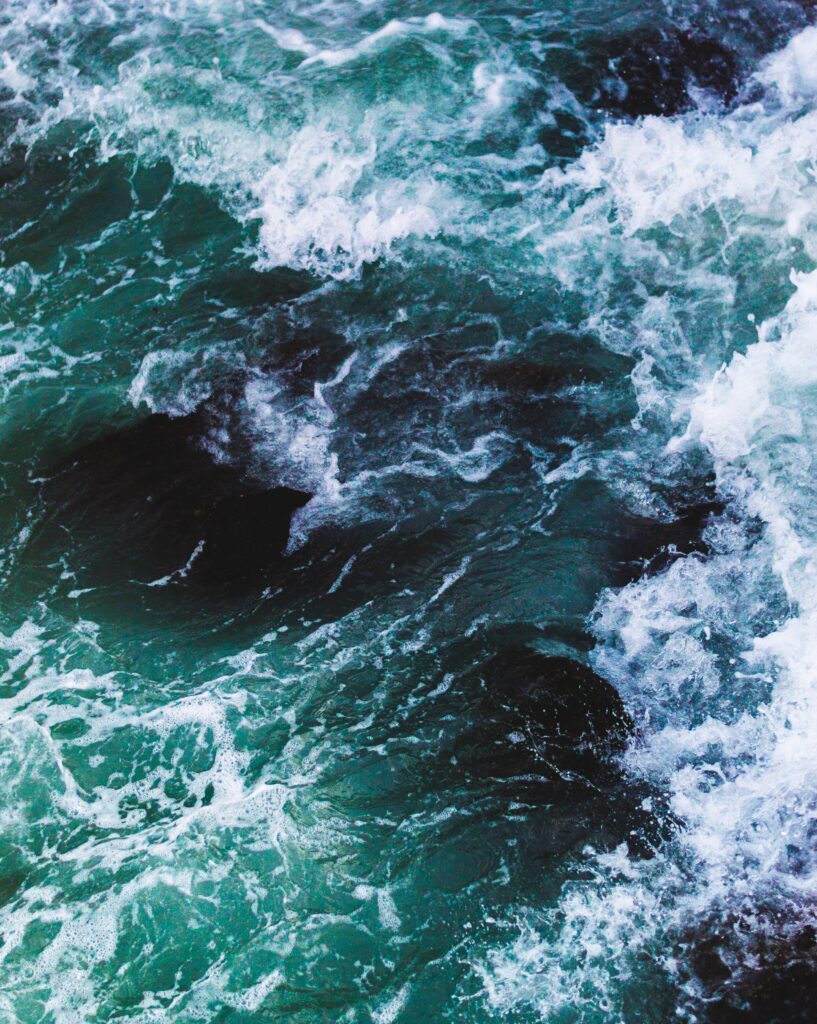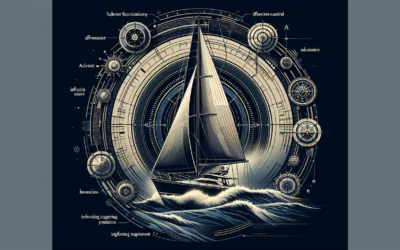If you’re new to the world of fish finders and feeling a bit overwhelmed by all the unfamiliar jargon, fear not! “Lingo of the Deep: Essential Terms Every Fish Finder User Should Know” is here to help. This comprehensive guide is designed to demystify the language of fish finders, providing you with a clear understanding of all the essential terms you’ll encounter when using these underwater devices. Whether you’re a seasoned angler or a beginner looking to explore the depths, this article will equip you with the knowledge you need to make the most of your fishing adventures.
Transducer

Definition of a Transducer
A transducer is a vital component of a fish finder that converts electrical energy into sound waves and vice versa. It serves as the fish finder’s sonar system, emitting sound waves into the water and receiving the echoes that bounce back. Transducers come in various shapes and sizes, but they all perform the same essential function of transmitting and receiving signals underwater to provide accurate information about the underwater environment.
Types of Transducers
There are primarily two types of transducers commonly used in fish finders: single frequency and dual frequency. Single frequency transducers operate at a specific frequency, typically 200 kHz, and are suitable for shallow water fishing. On the other hand, dual frequency transducers can operate at two different frequencies, such as 200 kHz and 50 kHz. This allows users to switch between frequencies depending on their fishing needs, such as detecting fish in deep water. The choice between single and dual frequency transducers depends on the type of fishing one intends to do and the water conditions they will be facing.
Frequency
Understanding Frequency in Fish Finders
Frequency refers to the number of sound waves emitted by a transducer per second. In fish finders, frequency plays a crucial role in determining the device’s capability to detect fish and underwater structures. Higher frequency transducers, such as those operating at 200 kHz, provide greater resolution and are ideal for detecting small fish and detailed underwater structures. On the other hand, lower frequency transducers, typically operating at 50 kHz, are better suited for deep water fishing as they can penetrate deeper and cover a wider area.
High Frequency vs. Low Frequency
When choosing between high and low frequency transducers, it’s important to consider the fishing conditions and the specific targets you’re looking to locate. High frequency transducers offer exceptional detail and clarity in shallow water, making them ideal for anglers focused on small freshwater species. They excel in waters with less than 100 meters depth. Conversely, low frequency transducers are better suited for offshore applications or deepwater fishing, as their wider cone angle and deeper penetration allow for greater coverage and the detection of larger targets over a larger area.
Cone Angle
Explanation of Cone Angle
The cone angle refers to the width or coverage area of the sonar beam emitted by a transducer. It determines the area underwater that the fish finder can scan and detect. A wider cone angle covers a larger area but sacrifices detail, while a narrower cone angle provides higher resolution but covers a smaller area. Fish finders commonly offer cone angles ranging from 9 degrees to 60 degrees, with wider angles being more suitable for shallow water fishing and narrower angles for deepwater applications.
Importance of Cone Angle in Fish Finders
The cone angle is a critical factor to consider when purchasing a fish finder, as it directly impacts the device’s ability to detect fish and underwater structures in a given area. A wider cone angle is advantageous when fishing in shallow waters, as it allows for a larger coverage area and increases the chances of locating fish. Conversely, a narrow cone angle is more effective in deeper waters, where precision and detail become crucial. By choosing the appropriate cone angle for your fishing needs, you can optimize your fish finder’s performance and increase your chances of a successful fishing trip.
Sonar

Explanation of Sonar
Sonar, short for “sound navigation and ranging,” is the technology used by fish finders to detect and locate objects underwater. It relies on the principle of transmitting sound waves into the water and measuring the time it takes for the waves to bounce back after hitting an object. By analyzing these time differences, fish finders can determine the distance, size, and shape of underwater objects, including fish, rocks, vegetation, and the seabed.
Different Types of Sonar
Fish finders utilize different types of sonar to provide users with various features and functionalities. The most common types of sonar utilized in fish finders include:
- Single Frequency Sonar: This type of sonar emits a single frequency sound wave and is suitable for general fishing applications in shallow to moderate depth waters.
- Dual Frequency Sonar: Dual frequency sonar systems can operate at two different frequencies, allowing anglers to switch between frequencies depending on the fishing conditions and the type of fish they are targeting.
- CHIRP Sonar: CHIRP (Compressed High-Intensity Radiated Pulse) sonar is an advanced technology that utilizes a range of frequencies to provide superior detail, accuracy, and resolution, making it ideal for both shallow and deepwater fishing.
Understanding the different types of sonar available in fish finders enables anglers to choose the technology that best suits their fishing preferences and the conditions they regularly encounter.
Fish Arch
Definition of Fish Arch
A fish arch is a distinct visual representation on a fish finder display that indicates the presence of fish beneath the boat. Fish arches are often described as curved lines resembling an arch or half-circle. These arches are formed when a fish moves through the sonar beam emitted by the transducer. The size and shape of fish arches can vary depending on factors such as species, depth, and the fish finder settings.

Significance of Fish Arch in Fish Finders
Fish arches are an essential element in fish finders as they provide crucial information about the underwater environment and the presence of fish. When a fish arch appears on the display, it indicates that a fish has crossed through the sonar beam. The shape and size of the arch can give anglers insights into the fish’s size and behavior. By understanding how to interpret fish arches, anglers can increase their chances of successful fishing by targeting specific fish species and determining the best approach for catching them.
Bottom Composition
Understanding Bottom Composition
Bottom composition refers to the makeup and structure of the seabed or lake bottom. It plays a significant role in fish finding as different types of bottoms attract different fish species. Fish finders can provide valuable insights into the bottom composition by analyzing the echoes reflected from the bottom. These echoes appear on the display as distinct patterns, allowing anglers to identify and differentiate between various types of bottoms, such as rocks, sand, mud, or vegetation.
Identifying Different Types of Bottom Composition
When using a fish finder, identifying different types of bottom composition can be crucial in locating the preferred habitats of different fish species. Rocks, for example, may attract fish seeking shelter or foraging opportunities, while sandy or muddy bottoms are often home to bottom-dwelling species. By understanding how to interpret the signals on the fish finder’s display, anglers can make informed decisions regarding their fishing strategy, including the choice of lures, bait, and fishing techniques, according to the specific bottom composition they encounter.
Fish ID
Fish ID Feature in Fish Finders
Many modern fish finders come equipped with a Fish ID feature, which aims to simplify the identification of fish species. This feature uses unique algorithms to analyze the sonar data and automatically classify the detected signals as fish. Fish ID typically displays simple fish icons or symbols on the fish finder’s screen, alongside the more traditional fish arch representations.
Limitations of Fish ID
While the Fish ID feature can be beneficial for novice users or those who prefer a simpler display, it has its limitations. The algorithm may occasionally misclassify other underwater objects as fish, leading to false positives. Additionally, Fish ID does not provide detailed information about the size or behavior of the fish. Therefore, it is essential to interpret the sonar data critically and rely on additional features such as fish arches and bottom composition analysis for a more accurate understanding of the underwater environment and the fish present.
Gain
Explanation of Gain
Gain is a setting available in fish finders that adjusts the sensitivity of the sonar receiver. By increasing or decreasing the gain, anglers can fine-tune the fish finder’s ability to detect weak or strong echoes from fish and underwater structures. High gain settings amplify the sonar signals, making it easier to identify smaller fish or objects, while low gain settings reduce sensitivity to avoid clutter and provide a clearer display.
Adjusting Gain for Optimal Performance
Finding the optimal gain setting for your fishing conditions can significantly enhance your fish finder’s performance. When adjusting the gain, start with a moderate setting and observe the display. Increase the gain gradually until the desired level of information and detail is achieved without excessive clutter. It’s important to remember that the optimal gain level may vary depending on factors such as water conditions, depth, and the presence of vegetation or debris. Regularly adjusting the gain based on these factors will ensure the best possible performance and accurate interpretation of the sonar data.
Depth Range
Overview of Depth Range
Depth range refers to the maximum and minimum depths at which a fish finder can accurately detect and display objects. Different fish finders offer varying depth ranges, and it is crucial to select a device that aligns with your typical fishing environment. The depth range is determined by the power and frequency of the sonar signals emitted by the transducer, as well as the clarity and resolution of the display.
Setting the Proper Depth Range
To set the proper depth range on your fish finder, consider the fishing conditions and the depth you expect to encounter. Ensure that the selected depth range encompasses the water depths you plan to fish in, allowing you to visualize both the surface and the seafloor without losing clarity or resolution. It’s important to choose a fish finder with a depth range that suits your fishing needs, whether you prefer shallow water freshwater fishing or deep-sea offshore excursions. This ensures that you have a clear view of the underwater environment and can accurately locate fish and structures at your desired depths.
Sensitivity
Understanding Sensitivity in Fish Finders
Sensitivity is another adjustable setting on fish finders that regulates the device’s ability to detect and display underwater echoes. It determines the threshold at which the fish finder interprets weak signals as significant objects. Higher sensitivity settings increase the device’s ability to detect small or distant fish, while lower sensitivity settings filter out weaker signals, reducing clutter and improving display clarity.
Tips for Adjusting Sensitivity
When adjusting the sensitivity setting, it’s essential to find the right balance between detecting small fish and minimizing false readings caused by interference or noise. Begin with a moderate sensitivity setting and slowly increase or decrease it while observing the display. Aim for a level where you can see the desired targets clearly while avoiding excessive clutter or false echoes. Keep in mind that changes in water conditions and the presence of vegetation or debris may require adjustments to optimize the sensitivity for the best fishing performance.
In conclusion, familiarizing yourself with the essential terms and concepts related to fish finders is crucial for maximizing your fishing experience. Understanding the functionalities and settings of a fish finder, such as transducers, frequency, cone angle, sonar, fish arch, bottom composition, fish ID, gain, depth range, and sensitivity, empowers you to make informed decisions and interpret the sonar data accurately. By leveraging these valuable tools and features, you can enhance your fishing skills, identify fish habitats, and improve your chances of success on the water.










